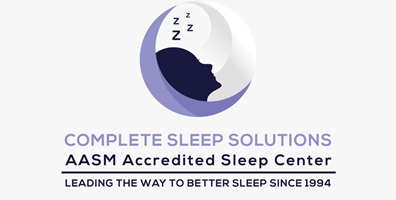
Advanced sleep phase syndrome (ASPS)
This condition is characterized by falling asleep early, usually between 6 p.m. and 8 p.m., and waking up before dawn. If you suffer from ASPS, you may fall asleep at dinner parties and early evening social functions but may force yourself to stay awake later in the evening. ASPS affects many adults over the age of 65.
Overview
The circadian rhythms of sleep propensity and melatonin secretion are regulated by a central circadian clock, the suprachiasmatic nucleus of the hypothalamus. The most common types of sleep disorders attributed to an alteration of the circadian clock system are the sleep/wake cycle phase disorders, such as delayed sleep phase syndrome and advanced sleep phase syndrome (ASPS). Advanced sleep phase syndrome is characterized by the complaint of persistent early evening sleep onset and early morning awakening. Although the complaint of awakening earlier than desired is relatively common, particularly in older adults, extreme advance of sleep phase is rare.
Methods :
We identified a large family with ASPS; 32 members of this family gave informed consent to participate in this study. Measures of sleep onset and offset, dim light melatonin onset, the Horne-Ostberg morningness-eveningness questionnaire, and clinical interviews were used to characterize family members as affected or unaffected with ASPS.
Results
Affected members rated themselves as "morning types" and had a significant advance in the phase of sleep onset (P<.001) and offset (P = .006) times. The mean sleep onset was 2121 hours for the affected family members and 0025 hours for the unaffected family members. The mean sleep offset was 0507 hours for the affected members and 0828 hours for the unaffected members. (Times are given in military form.) In addition, the phase of the circadian rhythm of melatonin onset for the affected family members was on average 3½ hours earlier than for the unaffected members.
Conclusions :
The ASPS trait segregates with an autosomal dominant mode of inheritance. The occurrence of familial ASPS indicates that human circadian rhythms, similar to those in animals, are under genetic regulation. Genetic analysis of familial sleep and circadian rhythm disorders is important for identifying a specific gene(s) responsible for the regulation of sleep and circadian rhythms in humans.
ADVANCED SLEEP phase syndrome (ASPS) is characterized by persistent advanced sleep onsets and awakenings that are earlier than desired.1-3 Individuals with ASPS typically experience sleepiness in the early evening, when other people are active, and early morning awakening, when most are still sleeping. Therefore, individuals with ASPS sometimes find it difficult to maintain a normal social and work life. It has been postulated that ASPS is a circadian rhythm disorder in which the phase of the circadian rhythm of sleep and wake is advanced in relation to the "normal timing," which is synchronized, to the external environment.2,3
The search for genetic components to many complex behaviors is intensifying. The recent completion of the Human Genome Project places researchers in a better position to quickly discover genes responsible for some of these complex behaviors. A familial approach is one technique used in the field of human genetics in an attempt to find associations between behaviors and genes. To do this type of research, it is important to identify and phenotypically characterize families that exhibit these behaviors. Familial associations have been reported in several sleep disorders. There is one reported case4 of delayed sleep phase syndrome, but as yet this family has not been fully described. Restless legs syndrome, a condition in which patients experience discomfort in the legs or limbs that is relieved by movement, appears to be transmitted as an autosomal dominant trait.5 One sleep disorder in which the heritability is well established is narcolepsy. Between 1% and 2% of narcoleptic probands have family histories of excessive daytime sleepiness.6,7 Furthermore, human narcolepsy has been linked to a region of the major histocompability complex (HLA) genes.8 More recently, the compound orexin has been linked to narcolepsy. Using a narcoleptic dog model, Lin and colleagues9 recently showed that the hypocretin (orexin) receptor gene (Hcrtr2) may be responsible for narcolepsy. Chemelli and colleagues10 found that orexin knockout mice exhibit a phenotype similar to that seen in narcoleptic patients and in dogs that have a mutation of canarc-1, a canine narcolepsy gene.11
In comparison, ASPS appears to be a far more rare sleep/circadian rhythm disorder, and until recently there were only 3 reported cases of ASPS.12-15 More recently, however, Jones and colleagues16 described 3 separate families with a familial preponderance of ASPS. Identification of the familial nature of ASPS suggests a genetic basis for this syndrome. The present study phenotypically characterizes an additional case of familial ASPS by describing the clinical characteristics, activity/rest measures, and circadian phase in affected and nonaffected members of a large family with ASPS.

